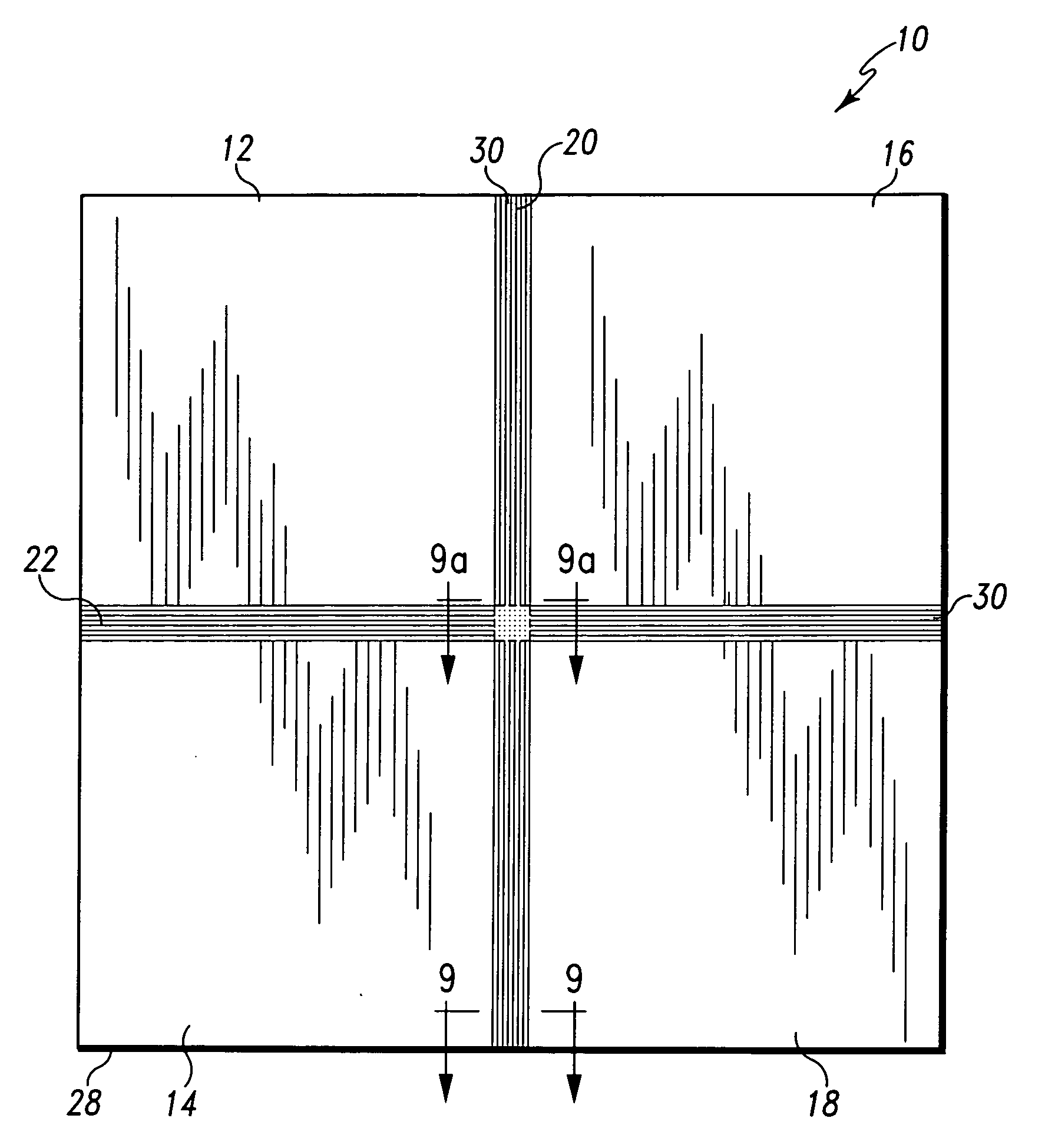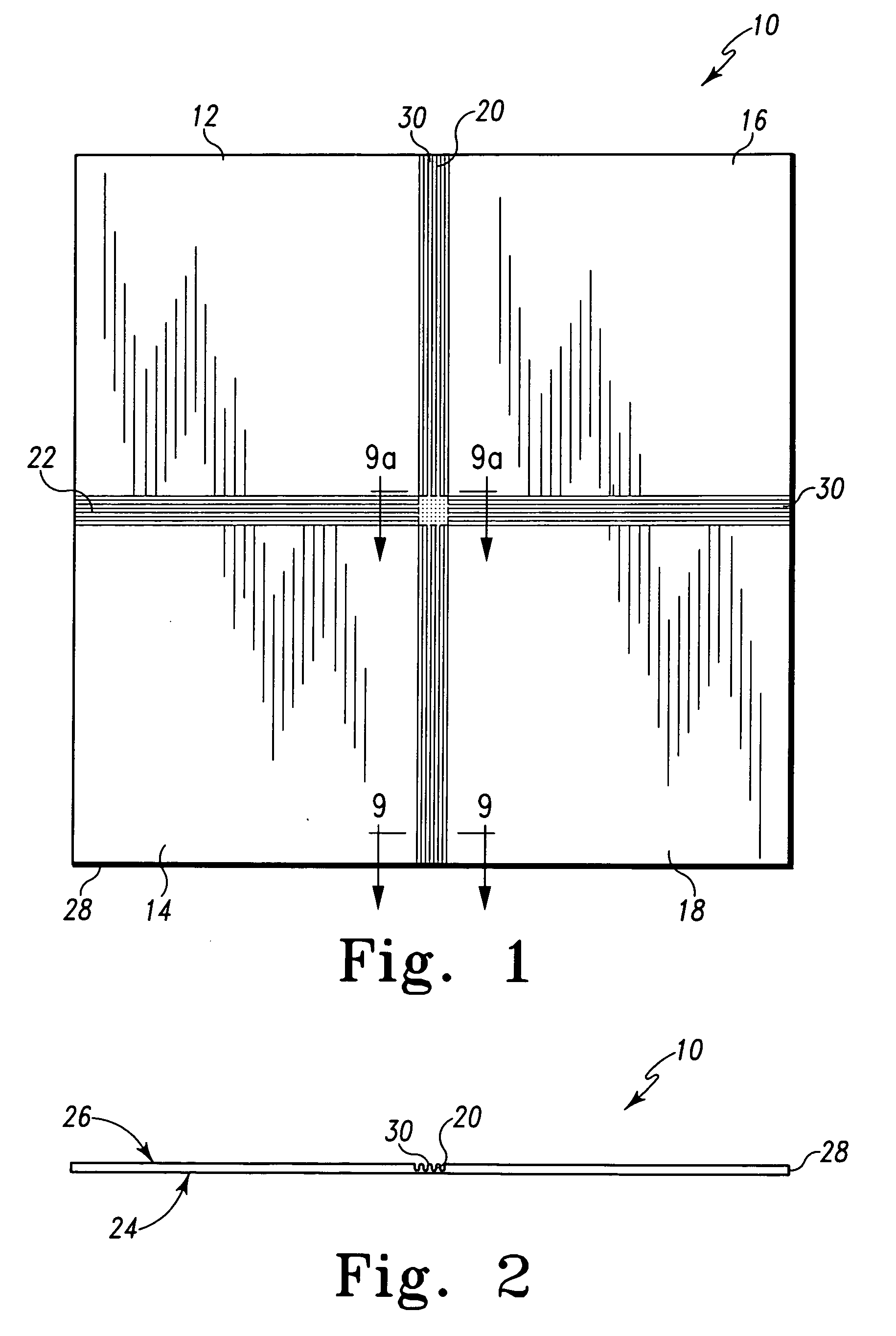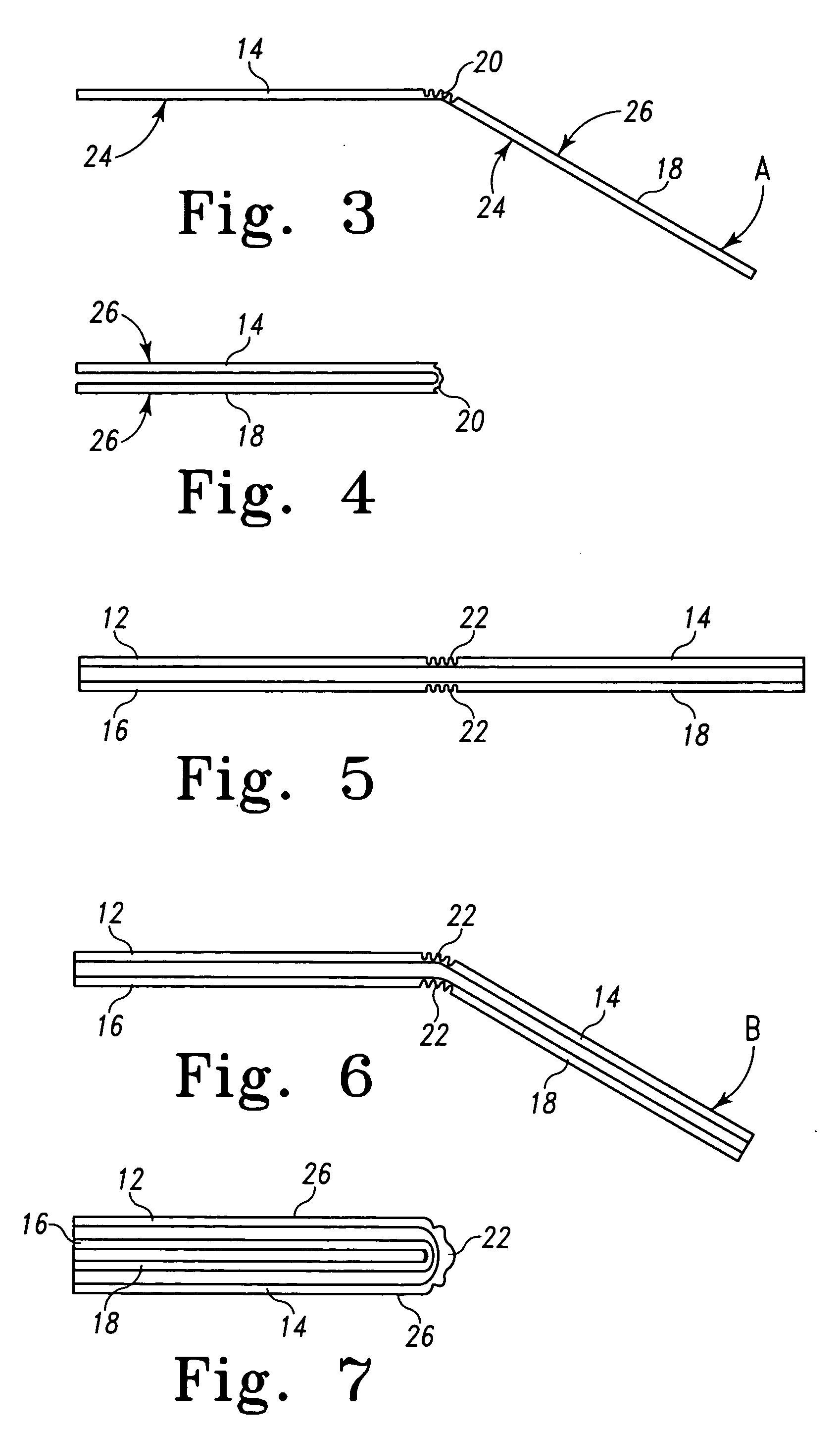Foldable chair mat
- Summary
- Abstract
- Description
- Claims
- Application Information
AI Technical Summary
Benefits of technology
Problems solved by technology
Method used
Image
Examples
Embodiment Construction
[0026] A chair mat 10 of the present invention is shown in FIG. 1 in a planar configuration to have four areas 12, 14, 16, and 18 separated by two intersecting linear separation regions 20 and 22. The mat 10 has an upper surface 24 and lower surface 26, shown in FIG. 2, meeting at an outer perimeter 28. The linear separation regions 20 and 22 can be of identical construction. The separation regions 20, 22 are generally composed of a series of longitudinally parallel grooves 30. The grooves 30 can be as shown in detail in cross-section in FIG. 9 to consist of valleys 32 that can extend more than half way through the material forming the mat 10. The valleys 32 can be separated by ridges 34 that have distal ends 36 that are substantially coplanar with the lower surface 26 of the mat 10. While FIG. 9 shows four valleys 32 separated by three ridges 34, the number of valleys and ridges may be subject to some variation so long as the series of parallel grooves 30 permits the mat 10 to be f...
PUM
 Login to View More
Login to View More Abstract
Description
Claims
Application Information
 Login to View More
Login to View More - R&D
- Intellectual Property
- Life Sciences
- Materials
- Tech Scout
- Unparalleled Data Quality
- Higher Quality Content
- 60% Fewer Hallucinations
Browse by: Latest US Patents, China's latest patents, Technical Efficacy Thesaurus, Application Domain, Technology Topic, Popular Technical Reports.
© 2025 PatSnap. All rights reserved.Legal|Privacy policy|Modern Slavery Act Transparency Statement|Sitemap|About US| Contact US: help@patsnap.com



